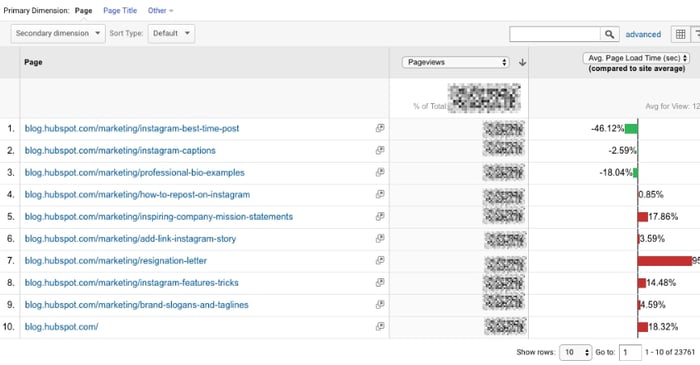When Does the Google Analytics Tracking Code Send an Event Hit to Analytics? Timing and Finest Practices Explained
When Does the Google Analytics Tracking Code Send an Event Hit to Analytics? Timing and Finest Practices Explained
Blog Article
Enhance Your Web Site Efficiency With Google Analytics Monitoring Code
In the digital landscape, recognizing customer interactions with your web site is critical for optimization. This strategic execution not just educates your decisions yet also leads the way for a more engaging user experience.
Comprehending Google Analytics
Understanding Google Analytics is crucial for website proprietors and marketers intending to maximize their online existence. This effective device provides vital insights into individual behavior, enabling stakeholders to make data-driven decisions. By tracking different metrics, such as page views, bounce rates, and user demographics, Google Analytics helps recognize which facets of an internet site are doing well and which need improvement.
One of the crucial functions of Google Analytics is its capability to sector data. Customers can assess web traffic sources, user interaction, and conversion prices throughout different sections, such as geographic locations or tool kinds. This granularity enables marketing experts to customize their techniques to specific audiences, thus enhancing the efficiency of their projects.

Establishing Monitoring Code
To harness the complete capacity of Google Analytics, setting up the monitoring code correctly is an essential action. The tracking code, a bit of JavaScript, allows Google Analytics to gather data concerning user interactions on your site. To begin, log in to your Google Analytics account and browse to the Admin section. Under the Building column, select "Monitoring Details" and after that "Tracking Code." Right here, you will certainly locate your one-of-a-kind monitoring ID, which begins with "UA-" followed by a collection of numbers.
Following, you'll require to embed this code into the HTML of your internet site. Preferably, position the tracking code right before the closing tag on every web page you desire to monitor. Consider using plugins that promote very easy integration. if you're using a material administration system (CMS) like WordPress.
After executing the code, it's critical to validate its performance. Use the "Real-Time" records in Google Analytics to confirm that information is being collected as expected. By guaranteeing proper arrangement, you develop a solid structure for efficient information evaluation and tactical decision-making to enhance your website's performance.
Trick Metrics to Display
On a regular basis checking key metrics in Google Analytics is important for examining your website's efficiency and user interaction. Among the basic metrics to track are web page views, which give understanding into how commonly users visit various pages on your website. In addition, special site visitors aid you comprehend the reach of your material by showing how lots of distinct users are engaging with your site over a given duration.
Bounce rate is an additional critical statistics, exposing the percentage of visitors who leave your website after seeing just one web page. A high bounce rate may indicate issues with material importance or individual experience. Alternatively, session duration indicates the length of time site visitors remain on your website, helping you evaluate content effectiveness and customer passion.
Conversion prices are important for gauging the success of your internet site in accomplishing particular objectives, such as type submissions or product purchases (when does the google analytics tracking code send an event hit to analytics?). Checking website traffic sources is also key, as it assists identify which networks drive the most traffic and conversions, permitting even more targeted marketing approaches
Analyzing Visitor Habits
Additionally, tracking customer paths through the website aids expose typical navigating patterns. This information is important in identifying whether users can quickly locate the material they seek or if they experience barriers that bring about frustration. Recognizing high leave pages can highlight areas that may require redesign or even more appealing material to keep site visitors.
In addition, segmenting individuals based upon demographics, interests, and behavior gives a much deeper understanding of the target audience. This division enables companies to tailor content and advertising and marketing strategies more efficiently, raising the likelihood of conversions. Ultimately, evaluating site visitor behavior not just educates website enhancements yet also fosters an extra user-centric technique, causing improved contentment and loyalty in time.
Carrying Out Data-Driven Modifications
Executing data-driven adjustments is important for boosting web site efficiency and accomplishing business objectives. By leveraging insights collected from Google Analytics, organizations can recognize locations for improvement and make informed choices to optimize individual experience.
First, assess essential performance indications (KPIs) such as bounce rates, session duration, and additional resources conversion prices to determine details problems affecting individual involvement - when does the google analytics tracking code send an event hit to analytics?. As an example, a high bounce price on a touchdown web page might indicate that the web content is not resonating with visitors or that the web page takes as well lengthy to lots

Final Thought
In conclusion, the implementation of Google Analytics tracking code is important for maximizing website efficiency. By precisely monitoring individual behavior and vital metrics, useful insights can be gained, promoting data-driven decision-making.
By tracking various metrics, such as try this site page sights, bounce prices, and user demographics, Google Analytics aids determine which elements of a site are carrying out well and which need enhancement.
Users can examine website traffic resources, user involvement, and conversion prices throughout different segments, such as geographical locations or device kinds. The tracking code, a fragment of JavaScript, makes it possible for Google Analytics to accumulate data regarding customer interactions on your website.Regularly checking key metrics in Google Analytics is vital for evaluating your internet site's performance and individual interaction. By leveraging Google Analytics, web site proprietors can acquire beneficial insights right into just how customers communicate with their website.
Report this page